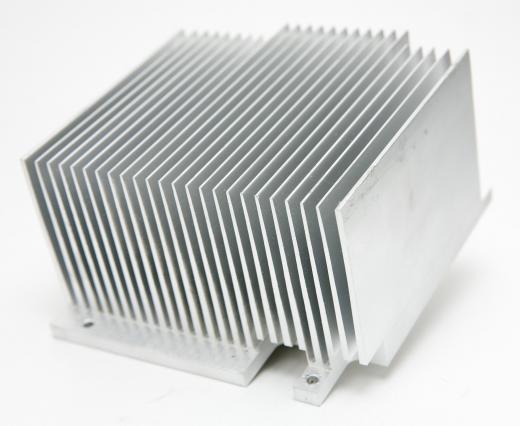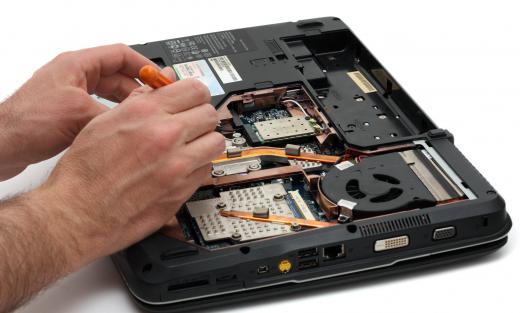A thermal probe is a sensor used to detect temperature levels in a particular area. The conductivity of the metal inside a thermal probe increases and decreases with temperature changes. Conductivity readings from the probe are translated and displayed on a temperature readout. Thermal probes are often used to detect hot spots in computer circuitry before they cause expensive damage. Some computer motherboards come with multiple thermal probes built in to quickly self-diagnose overheating problems.
Computer repair technicians take temperature reading with a thermal probe while a computer is running near full capacity. Thermal probes are often positioned on or around the heat sink inside the central processing unit. Many thermal probes are small so they can fit into the tightest spaces inside a computer. Partially insulating a central processing unit (CPU) thermal probe reduces interference to make pinpointing temperature issues more accurate. Conduits or cord tubes are generally used to protect the probe and the fragile computer chips.

Thermal probes get more accurate readings when they come in direct contact with the computer hardware. Specialized thermal adhesive transfer tape holds the end portion of a thermal probe onto the desired area on the CPU. The conductive tape secures the connection between the probe and the microchip without influencing the temperature readings. Probes and the adhesive tape holding them in place must be carefully removed and repositioned to take the temperature in a new location. Mounting a thermal probe directly in front of a working computer fan generally leads to inaccurate temperature readings.

Monitoring a thermal probe regularly can help avoid computer repair and hardware replacement. Thermal probes with built-in monitoring software allow the user to check on the temperatures inside the device and attempt to eliminate heat problems. Some probe monitoring software allows the user to set alarms that warn them when dangerous temperatures are nearly reached. Enhanced internal cooling systems like additional fans and liquid coolers can have an immediate noticeable effect on thermal probe readouts. Running a CPU in a cooled room makes it easier for the cooling system to be effective.
Small electronic devices sometimes have internally monitored thermal probes. These tiny built-in sensors are able to trigger an automatic shutdown when the device is operating close to unsafe temperatures. Multiple thermal probes are integrated directly into the circuitry for constant monitoring during use. Probe damage or failure may cause unexpected shutdown and prevent powering up on an electronic device.
